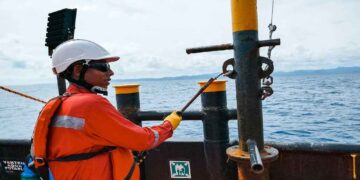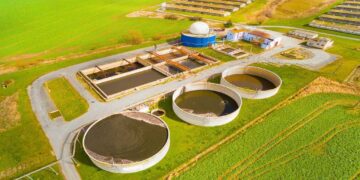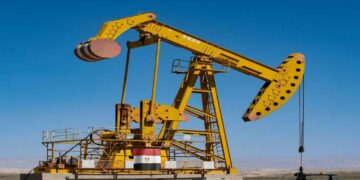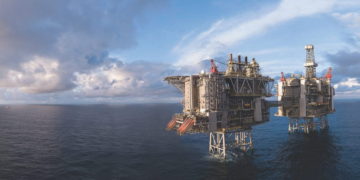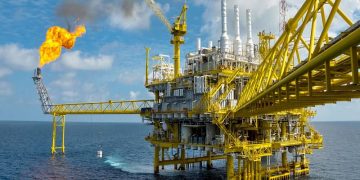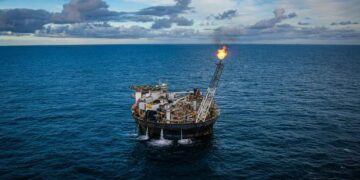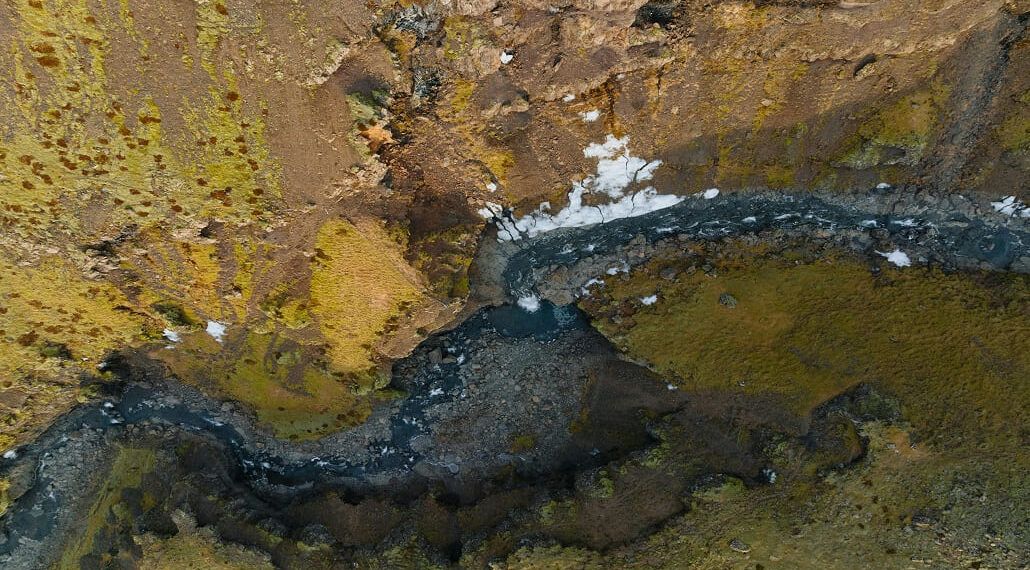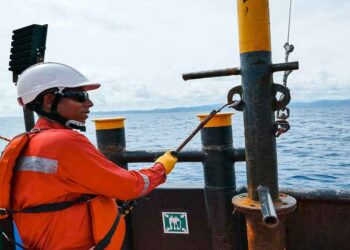Upstream Exploration in High-Risk Geographies: A Guide to Mitigating Operational Challenges in 2025
The global energy industry is being squeezed ever tighter between the growing demand and an ever-evolving set of environmental, geopolitical and operational challenges. This dynamic has been particularly pronounced with respect to upstream exploration in high-risk geographies. In this global transition towards renewable energy, the oil and gas resources of yesteryears continue to play a vital role in energy security, and the high-risk regions where they remain unexplored comprise a potential solution integral to the energy transition in meeting global needs. But de-risking our exploration of these difficult geographies in 2025 demands an advanced approach of balancing operational efficiency, safety, and sustainability with addressing the inherent risks.
The Appeal and Challenges of High-Risk Geographies
High-risk geographies, where the majority of the world’s hydrocarbons are located, such as the frontier basins of Arctic regions, politically unstable countries and remote offshore sites, often hold very large, relatively untapped reserves. For example, the U.S. Geological Survey estimates that the Arctic alone contains about 13% of the world’s undiscovered oil and 30% of its undiscovered natural gas. Other areas such as Sub-Saharan Africa and the South China Sea are becoming key exploration areas, owing to large resource potential.
What makes these regions so appealing is that they offer the potential to tap new resources that could stabilize supply and hedge against production declines from aging fields. But those regions come with challenges not limited to severe weather and rough terrain to geopolitical volatility and regulatory uncertainty. Further complicating successful exploration projects are NAVITAS55433 operational risks like logistical challenges, technical constraints and environmental sensitivities.
High-risk geographies present challenges that companies will have to grapple with in 2025: integrating advanced technologies with strategic partnerships, backed by risk management frameworks that are up to the task.
Technological Advancements Elevating Upstream Exploration
One key milestone in 2025 is the application of cutting-edge technology in upstream exploration programs. New technology such as seismic imaging, AI, and remote sensing are allowing oil and gas companies to help reduce risk and increase productivity in difficult operating environments.
Indeed, high-resolution 3D and 4D seismic imaging technologies have transformed subsurface mapping, revealing the intricacies of complex geological structures. These technologies help geologists to identify and model possible reservoirs with more certainty, minimizing the risk of having unsuccessful drilling campaigns. As an example of such a company, ExxonMobil — in partnership with top-tier tech companies — has leveraged next-generation enhanced seismic imaging for major exploration breakthroughs and breakthroughs in environmentally sensitive risk areas such as Guyana, where the Stabroek Block has an evaluated 11 billion barrels of the recoverable oil equivalent.
Exploration capabilities are further smoothed with AI and machine learning. AI-driven predictive analytics enables operators to evaluate geological conditions, forecast equipment breakdowns, and streamline drilling operations in real time. In high-risk environments, this means less operational downtime and better safety performance. Furthermore, drones and autonomous underwater vehicles (AUVs) are being utilized for environmental monitoring and inspection of infrastructure, reducing the need for humans to be in dangerous environments.
Digital twins—virtual representations of physical assets—are transforming upstream operations, too. By replicating the performance of drilling rigs and production assets, digital twins allow operators to test scenarios, optimize maintenance scheduling and avert potential equipment failures. So, this decreases expenses and improves operation reliability in isolative or strategically favorable environments.
Addressing Geopolitical and Regulatory Risks
Such high-risk geographies often also introduce increased geopolitical and regulatory complexities. Many of these areas have political instability, shifting governments, or conflict, all of which can disrupt operations and keep away foreign investment. Countries like Venezuela, Libya, and Nigeria, for example, have historically had political environments that are quite volatile, which presents a challenging upstream exploration scenario.
As a result, more and more corporations are implementing strong stakeholder engagement strategies to mitigate geopolitical risks. Building good relationships with local governments, communities, and other stakeholders is crucial to earning the social licenses to operate. Transparency in operations, adherence to ethical practices, and investments in local economic development are critical components to fostering trust and stability.
Moreover, operating within regulatory frameworks poses an ongoing hurdle, especially in countries with dynamic or inconsistent legal environments. Businesses have to stay in line with local and international laws and still need to be agile enough in the event of policy change. The study of environmental, social, and governance (ESG) standards has been an essential catalyst for a foundation of resilience to build against regulatory uncertainties—and also for managing the ripple effect, in communities and global economies, through whatever the impact may be. Numerous exploration firms are now placing heavy emphasis on ESG initiatives; reducing emissions, preserving biodiversity and supporting community health, in order to bolster their reputation and mitigate regulatory risks.
Environmental Sustainability and Climate Challenges
Frequent activity in high-risk geographies comes with responsibility towards fragile ecosystems and extreme climate conditions. Drilling in the Arctic, for instance, carries serious risks to the environment, such as potential oil spills in icy waters, and threats to delicate marine habitats. Likewise, offshore operations in tropical areas face the challenges of hurricanes and typhoons, which have the potential to decimate infrastructure and endanger personnel safety.
Five key topics that drive upstream exploration strategies in 2025 Environmental sustainability is foundational in 2025. Companies are heavily investing in technologies and practices that cut their environmental footprint. Carbon capture and storage (CCS) technology is being deployed as a means of mitigating greenhouse gas emissions that are the result of exploration activities. For example, Equinor’s Northern Lights project in Norway represents a groundbreaking CCS effort that objectives to bury massive volumes of CO2 in offshore reservoirs — a model for responsible exploration.
Moreover, renewable energy solutions are incorporated into exploration activities. Solar panels and wind turbines are increasingly powering hybrid rigs, cutting down diesel use (and emissions). This strategy not only accords with global climate objectives, but also increases operational efficiency, particularly in remote locations, where logistical challenges arise with fuel.
Environmental risks are also being reduced with emergency response plans and enhanced spill containment systems. Containment domes, rapid-deployment booms, and skimmer vessels are used to respond quickly and effectively to possible oil spills, reducing their impact on the environment.
Financial and Operational Resilience
High-risk geographies carry tremendous financial risks. Exploration projects in these regions are typically high up-front capital investment and there is no assurance that a project will be successful. The construction industry is not immune to challenges of its own.
Companies are mitigating these risks by diversifying their portfolios and forming strategic alliances. In cases of these enterprises, cooperation, operators collectivise fee and elicit know-how, Thus, etching risks on a number of stakeholders. The potential for mining gas in regions like South Africa — as highlighted by the recent partnership between TotalEnergies, QatarEnergy and Eni in South Africa’s Luiperd gas fields — is a strong example of how combined resource efforts can be more productive than individual ventures.
The use of integrated project management (IPM) systems is also putting more powerful tools in the hands of engineers for managing resources and executing projects. By streamlining workflows and improving communication between teams, IPM systems enable companies to step up and remain in charge of complicated processes in dangerous environments.
Outlook for 2025 and Beyond
The benefits of international upstream energy exploration will continue to be an important aspect of oil and gas strategy, even as the global energy mix evolves. The International Energy Agency (IEA) estimates that by 2040, oil and gas will provide 47% of total energy demand, despite the growing popularity of renewables. This is a sobering reminder of the need for continued investment in exploration, especially excluding areas where resources are readily available.
Going forward, the way will be to navigate between the demands of operational efficiency, environmental sustainability and geopolitical resilience. Those companies that are more inovative, committed to ESG initiatives and adopting a proactive risk response approach will be the ones set up for long-time success in these higher-risk geographies. Utilizing new technologies, collaboration by stakeholders, and being responsible explorers can successfully help the industry navigate the challenges of 2025 and establish its place in the worldwide energy landscape.


